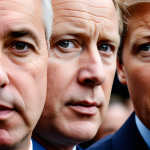Defining grassroots sports initiatives and their role in the UK
Grassroots sports initiatives encompass community-led programs designed to introduce and engage individuals, especially young people, in physical activities at the most local level. These initiatives focus on building participation rather than competition, providing accessible opportunities in diverse settings such as schools, clubs, and neighborhood centers. In the UK, grassroots sports definition revolves around this fundamental role in sports development, acting as the foundation upon which broader sports structures are constructed.
The structure of grassroots sports in the UK typically involves partnerships between local authorities, schools, sporting federations, and sometimes private sponsors. Funding is a mix of public grants, charitable funding, and community fundraising, all directed toward creating sustainable programs that encourage early sports participation. This inclusive approach ensures that sports can be accessed regardless of socio-economic background, helping to cultivate the next generation of athletes while promoting health and social cohesion.
Also read : How Has Technology Transformed the UK Sports Scene?
Importantly, grassroots initiatives act as entry points for children and adults alike, nurturing interest and skills that might otherwise remain dormant. Their role is crucial not only for physical wellbeing but also for fostering a lifelong connection with sport, setting the stage for potential progression toward more competitive levels.
Mechanisms for talent identification and athlete development
Grassroots sports initiatives in the UK serve as crucial platforms for talent identification and athlete progression. These community sports programs operate as the first stage in the talent development pathways, spotting young potential by providing inclusive environments where natural ability and passion can emerge. Coaches and volunteers within these settings often recognize promising athletes early, enabling a smooth transition into more structured training regimes.
Also to discover : How Has the UK Fostered Its Young Sports Talents Over the Years?
Development pathways are designed to nurture progression from grassroots to elite sports, incorporating various stages such as regional academies, youth squads, and national development programs. This layered system ensures that talent identified at the community level receives tailored support to refine skills and gain competitive experience.
The UK sports development framework emphasizes comprehensive support systems for emerging athletes, offering access to expert coaching, physical conditioning, psychological guidance, and education on nutrition. By integrating feedback loops and performance monitoring, these pathways aim to optimize athlete progression while balancing wellbeing and educational commitments.
In summary, talent development pathways anchored in grassroots sports initiatives create a sustainable pipeline for athlete progression. They not only boost competitive success but also reinforce the inclusive and community-centered values fundamental to UK sports development.
Successful models and case studies within the UK
Exploring successful grassroots programs in the UK reveals how well-designed community sports initiatives translate into real athlete development and social benefits. A key characteristic of these case studies UK is their ability to connect local resources with structured talent pathways, creating environments where participation and excellence grow hand in hand.
One exemplary model involves partnerships between schools, local clubs, and county sports bodies. Here, coaches receive ongoing training to identify potential early, while programs prioritize inclusivity to remove socioeconomic barriers. Such initiatives have produced notable athlete stories, with many national-level competitors tracing their roots to these community programs.
Community engagement is another vital success factor. Program organizers often enlist local volunteers and families, fostering a sense of belonging that encourages sustained involvement. For example, multi-sport festivals and school competitions act as platforms not only for talent spotting but also for social integration and health promotion.
This blend of support, structure, and community buy-in showcases how successful grassroots programs in the UK do more than develop athletes—they strengthen the social fabric and encourage lifelong participation in sport. These models serve as blueprints for replicating success nationwide, emphasizing holistic development from the grassroots upwards.
Statistical evidence and expert opinions on effectiveness
Understanding the impact of grassroots sports initiatives requires analyzing sports statistics UK-wide and gathering expert insights on grassroots sports. Data consistently shows that participation rates increase in areas with strong community sports programs. For example, regions investing in grassroots sports definition tend to see higher youth engagement, which correlates positively with later athlete progression.
Experts in UK sports development highlight that well-structured grassroots initiatives contribute not only to skill acquisition but also to wider social benefits, including improved health and reduced antisocial behavior. Coaches and sports development professionals frequently emphasize early identification through community programs as vital for long-term athlete success.
Comparative analysis with non-UK models underscores the effectiveness of integrated talent development pathways anchored in grassroots efforts. While other countries may rely heavily on elite academies, the UK approach balances community access with structured athlete progression, ensuring a broad base for talent spotting.
In summary, the combined evidence from sports statistics UK and expert opinions confirms the critical role grassroots sports play. Their impact extends beyond competition, enriching communities and creating sustainable pipelines for athletic achievement. Maintaining and expanding these programs based on robust data and expert advice is essential for future UK sports success.
Challenges faced and recommendations for improvement
Grassroots sports initiatives face several challenges in maintaining and expanding their reach within the UK. A primary barrier is access and participation, particularly in underserved or economically disadvantaged communities where facilities may be limited or transportation difficult. This restricts opportunities for many aspiring athletes at the earliest stages of engagement.
Funding and resource allocation remain persistent concerns. Despite support from public grants and charitable funding, inconsistent or insufficient financing can hinder program sustainability and quality. Volunteer shortages and limited coach training further compound these issues, affecting the overall effectiveness of grassroots sports initiatives.
To address these challenges, policy recommendations emphasize increasing targeted investment in infrastructure and coaching education. Strengthening partnerships between schools, local authorities, and private sponsors can create more stable funding streams. Moreover, promoting inclusive programming tailored to diverse communities will help reduce disparities in participation.
Community involvement is crucial, with recommendations to enhance volunteer recruitment and support networks. Implementing data-driven evaluation methods can also optimize resource allocation and demonstrate impact, encouraging further backing. These strategies collectively aim to secure the future of UK sports by fostering a more equitable, efficient grassroots landscape.


